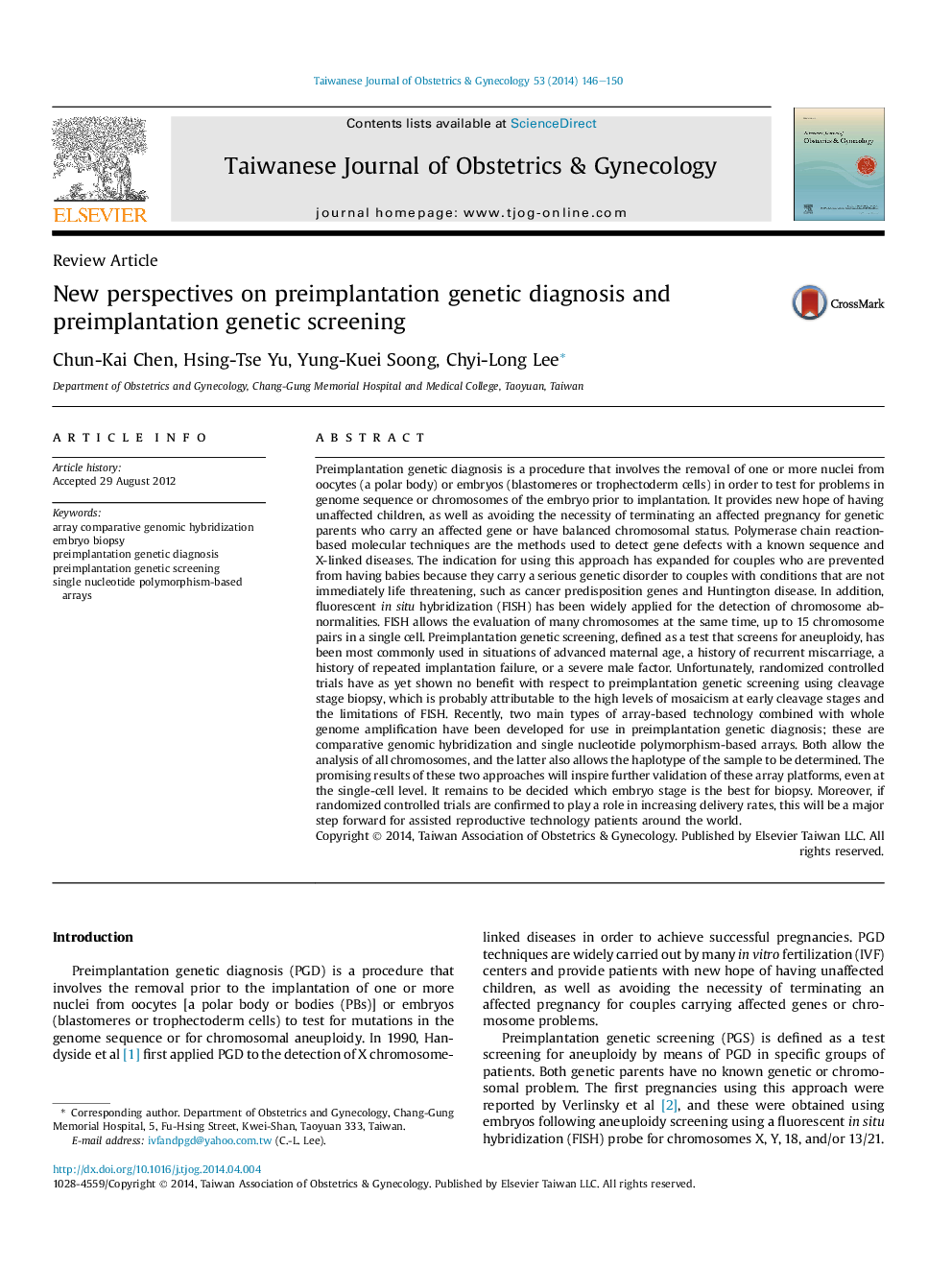| کد مقاله | کد نشریه | سال انتشار | مقاله انگلیسی | نسخه تمام متن |
|---|---|---|---|---|
| 3975116 | 1600977 | 2014 | 5 صفحه PDF | دانلود رایگان |
Preimplantation genetic diagnosis is a procedure that involves the removal of one or more nuclei from oocytes (a polar body) or embryos (blastomeres or trophectoderm cells) in order to test for problems in genome sequence or chromosomes of the embryo prior to implantation. It provides new hope of having unaffected children, as well as avoiding the necessity of terminating an affected pregnancy for genetic parents who carry an affected gene or have balanced chromosomal status. Polymerase chain reaction-based molecular techniques are the methods used to detect gene defects with a known sequence and X-linked diseases. The indication for using this approach has expanded for couples who are prevented from having babies because they carry a serious genetic disorder to couples with conditions that are not immediately life threatening, such as cancer predisposition genes and Huntington disease. In addition, fluorescent in situ hybridization (FISH) has been widely applied for the detection of chromosome abnormalities. FISH allows the evaluation of many chromosomes at the same time, up to 15 chromosome pairs in a single cell. Preimplantation genetic screening, defined as a test that screens for aneuploidy, has been most commonly used in situations of advanced maternal age, a history of recurrent miscarriage, a history of repeated implantation failure, or a severe male factor. Unfortunately, randomized controlled trials have as yet shown no benefit with respect to preimplantation genetic screening using cleavage stage biopsy, which is probably attributable to the high levels of mosaicism at early cleavage stages and the limitations of FISH. Recently, two main types of array-based technology combined with whole genome amplification have been developed for use in preimplantation genetic diagnosis; these are comparative genomic hybridization and single nucleotide polymorphism-based arrays. Both allow the analysis of all chromosomes, and the latter also allows the haplotype of the sample to be determined. The promising results of these two approaches will inspire further validation of these array platforms, even at the single-cell level. It remains to be decided which embryo stage is the best for biopsy. Moreover, if randomized controlled trials are confirmed to play a role in increasing delivery rates, this will be a major step forward for assisted reproductive technology patients around the world.
Journal: Taiwanese Journal of Obstetrics and Gynecology - Volume 53, Issue 2, June 2014, Pages 146–150
